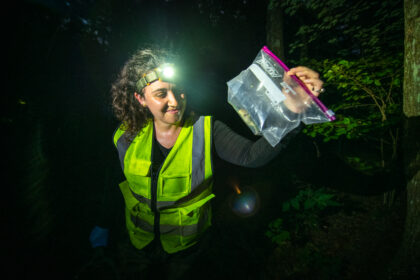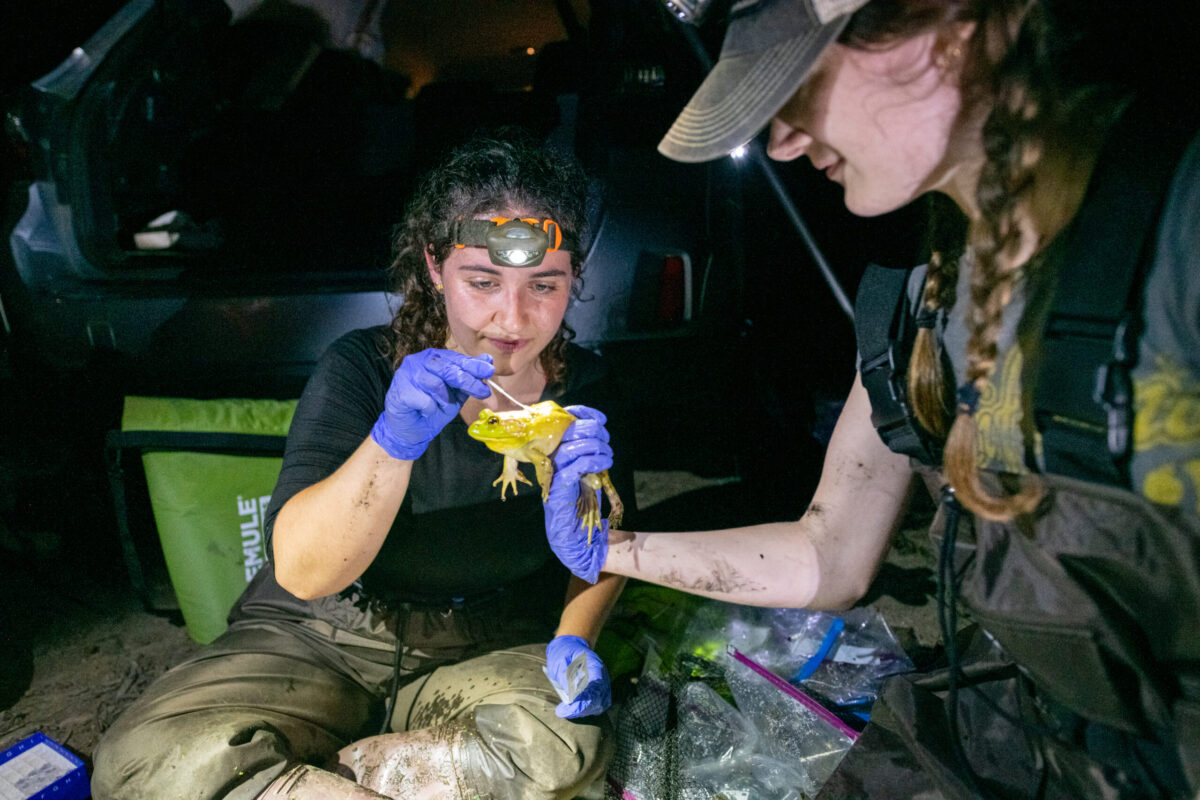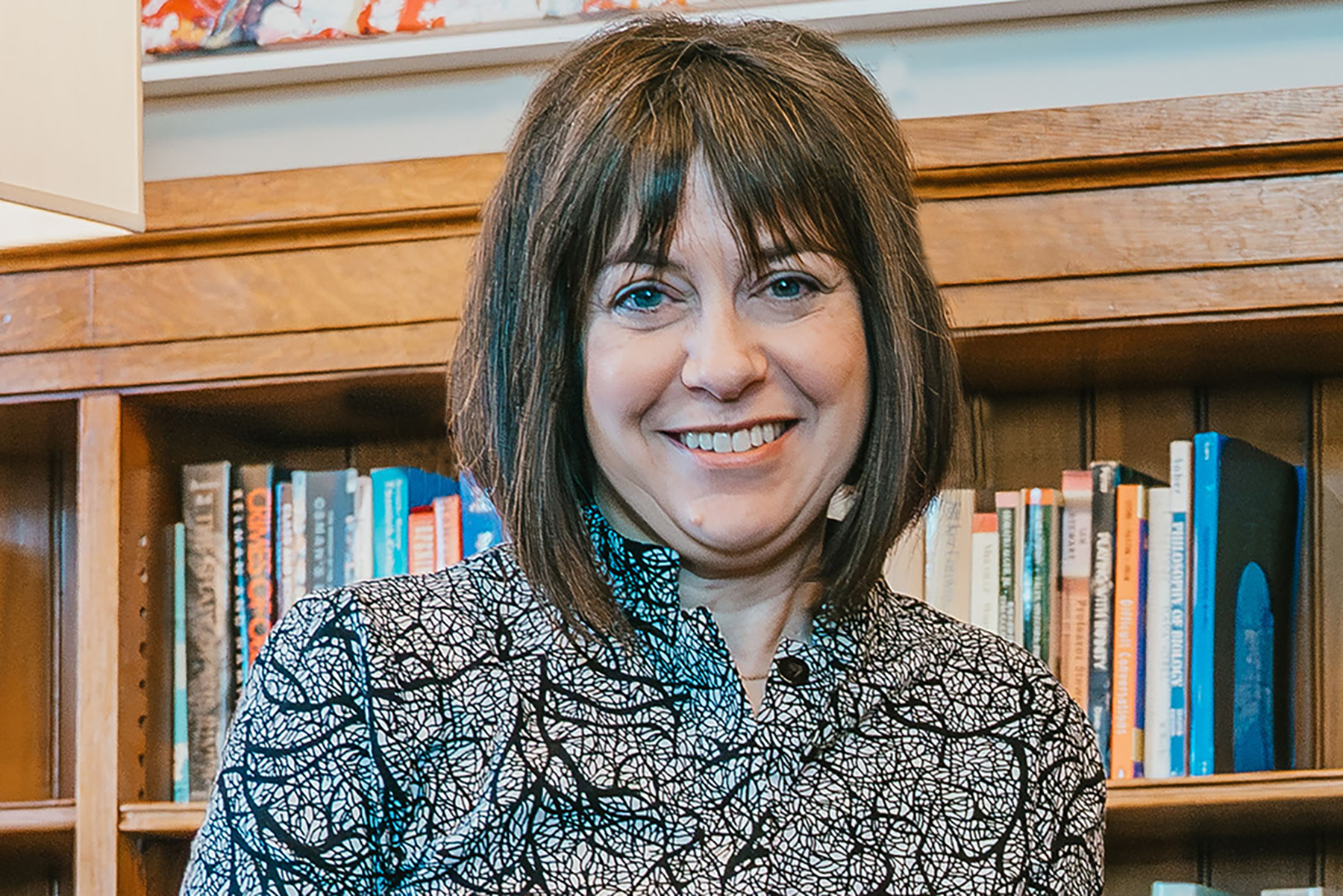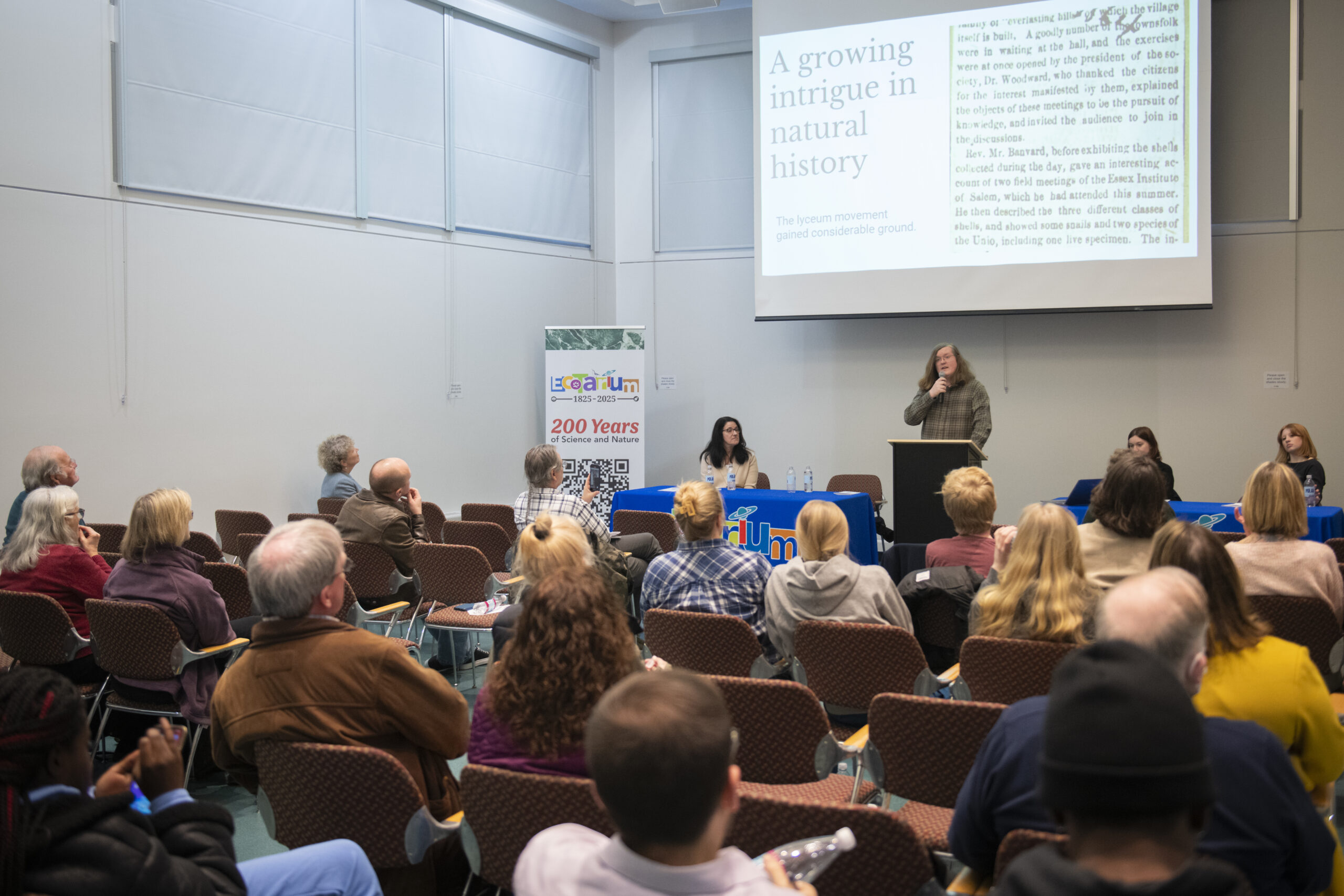Clark researchers put Worcester watershed under the microscope
Students survey a frog at Cooks Pond. The frogs take a trip to Clark for research and then are returned to their collection site.
Clark students working with a trio of Biology Department professors have been canvassing the Worcester watershed this summer, on a mission to understand the impact urbanization has on the ecosystem.
Led by professors Nathan Ahlgren, Philip Bergmann, and Javier Tabima Restrepo, the project spans from Cooks Pond by the Holden Reservoir and down to the Middle River just before it flows into the Blackstone River. The watershed begins in a protected area with pure water and flows into the middle of the city where human intervention becomes common.
The professors and six students are studying microbes in the water and in the mud, sand, and gravel below the water surface. They’re also assessing the health of frogs in the ecosystem because amphibians, which can breathe through their skin, are highly susceptible to environmental changes. The research project kicked off this summer with $20,000 in funding from Clark’s Academic Innovation Fund.

“We’re analyzing how this urbanization gradient affects what’s in the water and how that impacts microorganisms like bacteria and fungi as well as macroorganisms like frogs. We’re also looking at what types of metals are in the sand and dirt and the chlorophyll levels from plants and other bacteria,” says Manning DelCogliano ’23, one of the student researchers and a biochemistry and molecular biology major. “I’ve learned that so many factors impact a healthy ecosystem.”
The team is also collaborating with officials with the city of Worcester who regularly monitor the watershed and faculty and students at Worcester State University who are interested in similar questions about urbanization. This partnership allows the teams to share data and get a more comprehensive view of the watershed. The city, WSU, and Clark are also connecting with the Tatnuck Brook Watershed Association, a local community group working to protect these waterways.
Students wade into the water at night to catch frogs and immediately swab each frog’s back, belly, and sides. The frogs go into a cooler and are transported to Clark labs for more testing. On campus, the research team collects fecal samples, measures height and weight, and records how high the frogs can jump. The amphibians are returned to their collection site after their short stay at Clark. Analysis of the test results is ongoing.
DelCogliano realized the wider impact of their research after stumbling upon an algae bloom while collecting frogs at Patch Reservoir in July. She and Jasper Carleton ’24 noticed blue-green scum on the water. They scooped a water sample into a plastic bag and brought it back to the lab out of curiosity. Testing confirmed it was cyanobacteria, also called blue-green algae, which can create toxins that could make people, pets, and other animals sick.
Finding the bloom was serendipitous, Ahlgren says. Worcester officials shut down recreational activity at Coes Reservoir, which is downstream from Patch, a few days later because of a similar algae bloom. The reservoir has since reopened to the public. Though the shutdown wasn’t a direct result of the students’ findings, it showed the impact their work can have.
“It’s important for students to see how their research can connect to bigger things like helping to protect ecosystems,” Ahlgren says.

The Clark researchers now have new questions about what changes can be recorded in the environment before, during, and after an algae bloom. Tabima Restrepo is especially interested in analyzing the watershed for two fungi: Batrachochytrium dendrobatidis, known as Bd, and species of the genus Basidiobolus, often called Basi. He hopes to learn if Bd can be found before or after an algae bloom, and how a bloom affects the presence of Basidiobolus, which is mainly found in the guts of amphibians. The main issue with Basi is that it can cause diseases in immunocompromised people. It’s common in developing countries; if it exists in the U.S., it could be a risk for vulnerable populations.
“We’re curious about what the bloom does for water quality and frog health, and we’re also concerned for the people and dogs who splash through the water,” DelCogliano says. “This is an ever-evolving project and to some degree, it’s all related. This is science, but it’s also community.”
DelCogliano is keeping an eye out for other blooms while sampling water and frogs. The team wants to discover if bacterial and fungal changes are happening at the same degree.
Tabima Restrepo expects that fungal communities change when waterways move through highly urbanized areas — potentially carrying a higher volume of harmful fungi.
“Is there a risk you can get Basi as a skin disease if you’re immunocompromised and go swimming in the watershed? The idea that something like this could be present in the water opens up the gates,” he says. “It’s not only about the ecosystem. It’s about the health of everything around us.”





